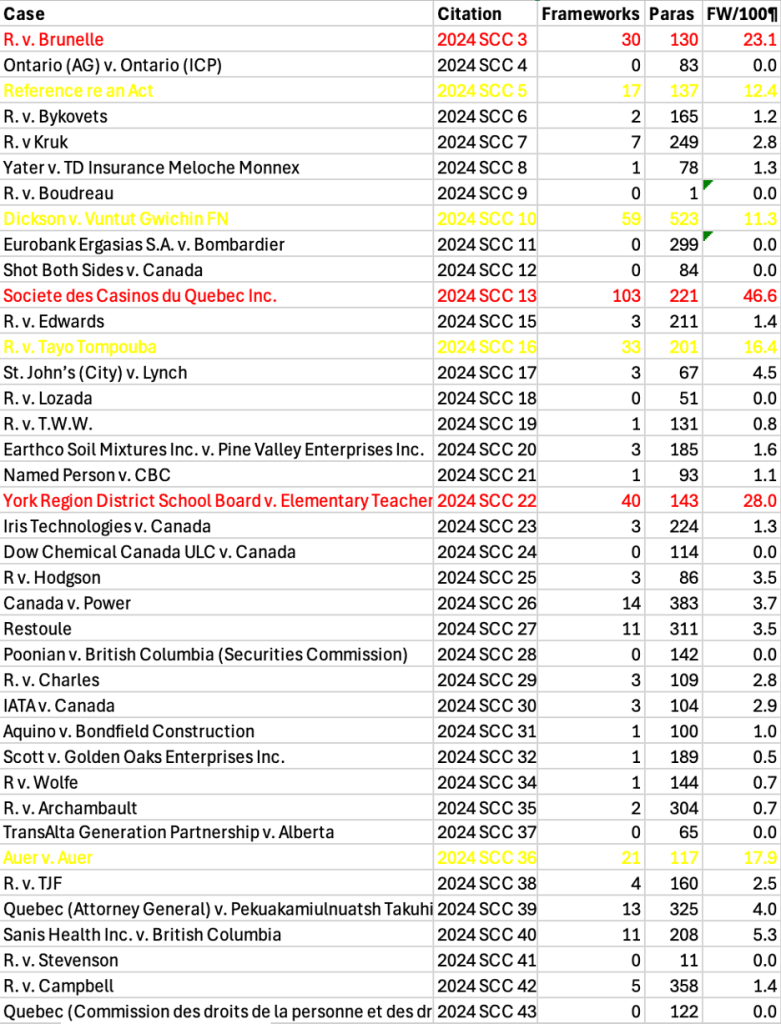As the Supreme Court of Canada begins its 2025 term, let us turn one last time to the great framework frenzy of 2024.
The league table ended 2024 largely unchanged from our mid-term update. Despite a brief resurgence in York Region, the Court could not maintain its framework form and managed only one case in double digits during the second half: Auer v. Auer, in which the Court applied Vavilov to subordinate legislation, namely the Federal Child Support Guidelines.
Here is the comprehensive final table of cases with written reasons, using the familiar three tiers of framework frequency: FW>20.0 (red), 20>FW>10 (yellow), and 10>FW (black).

Despite its dramatic peaks, the 2024 Term yielded an unimpressive median (1.4FW/100¶) and mean (5.2FW/100¶) framework usage rate, with a standard deviation (𝜎) of 9.5.
Only seven of 36 cases had FW rates above the mean:
- Dickson: 11.3 (< 𝜎)
- Reference re an Act: 12.4 (< 𝜎)
- Tayo Tompouba: 16.4 (< 2𝜎)
- Auer v. Auer: 17.9 (< 2𝜎)
- R. v. Brunelle: 23.1 (< 2𝜎)
- York Region: 28.0 (< 3𝜎)
- Société des Casinos du Québec: 46.6 (< 5𝜎)
All of these were constitutional cases (Auer counts due to Vavilov), but many other constitutional cases fell far short of the mean (e.g. Canada v. Power, Sanis Health Inc. v. British Columbia).
Some of these cases involved Indigenous peoples and aboriginal rights, but other such cases also undershot the mean (e.g. Jim Shot Both Sides, Restoule, Pekuakamiulnuatsh Takuhikan).
My pattern recognition skills falter. I’m not yet sure what to make of these results. I suspect the outliers warrant still more attention. I know I’m not done with frameworks, and I don’t think the Court is, either.
When in doubt, collect more data. Onwards 2025.

Leave a Reply